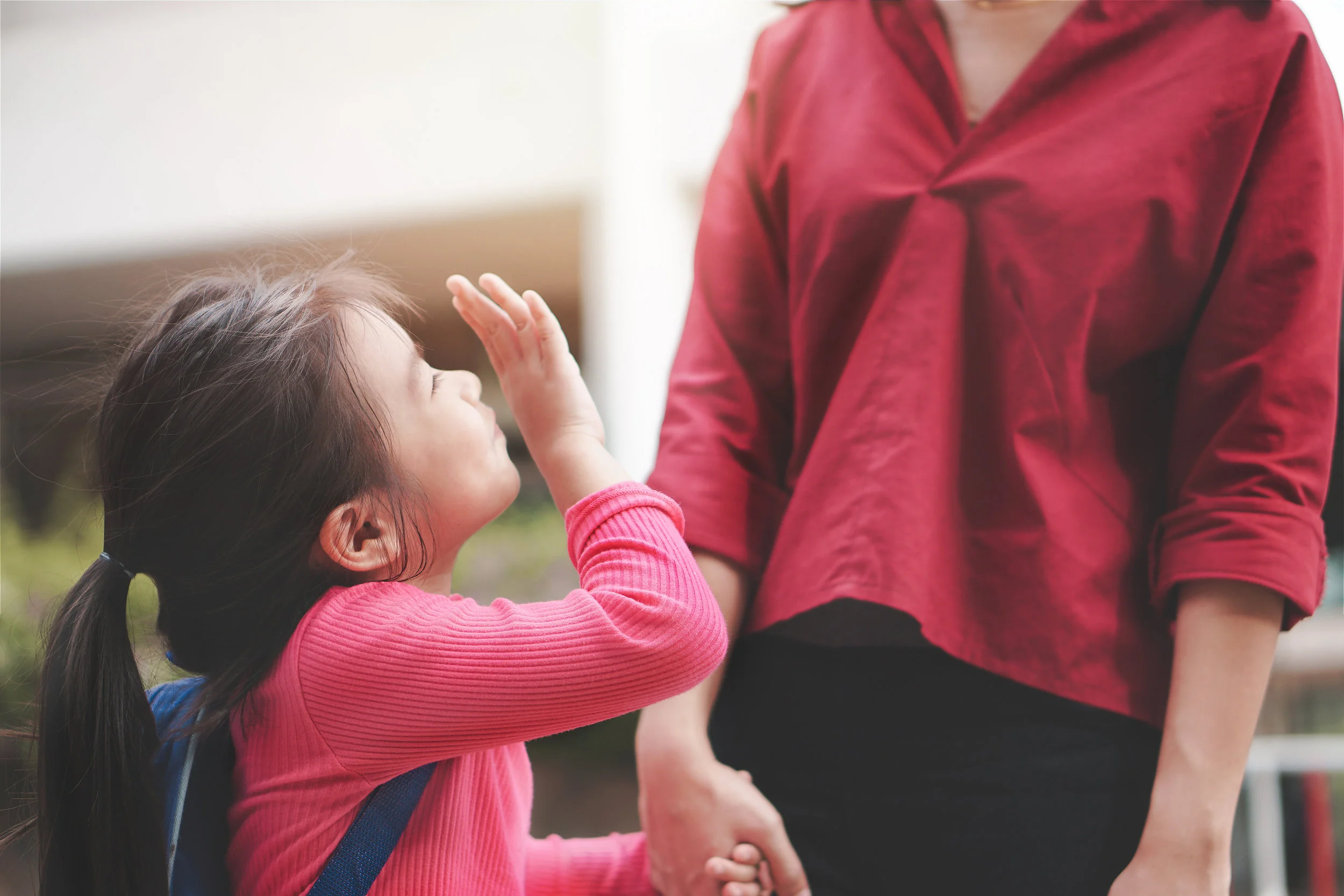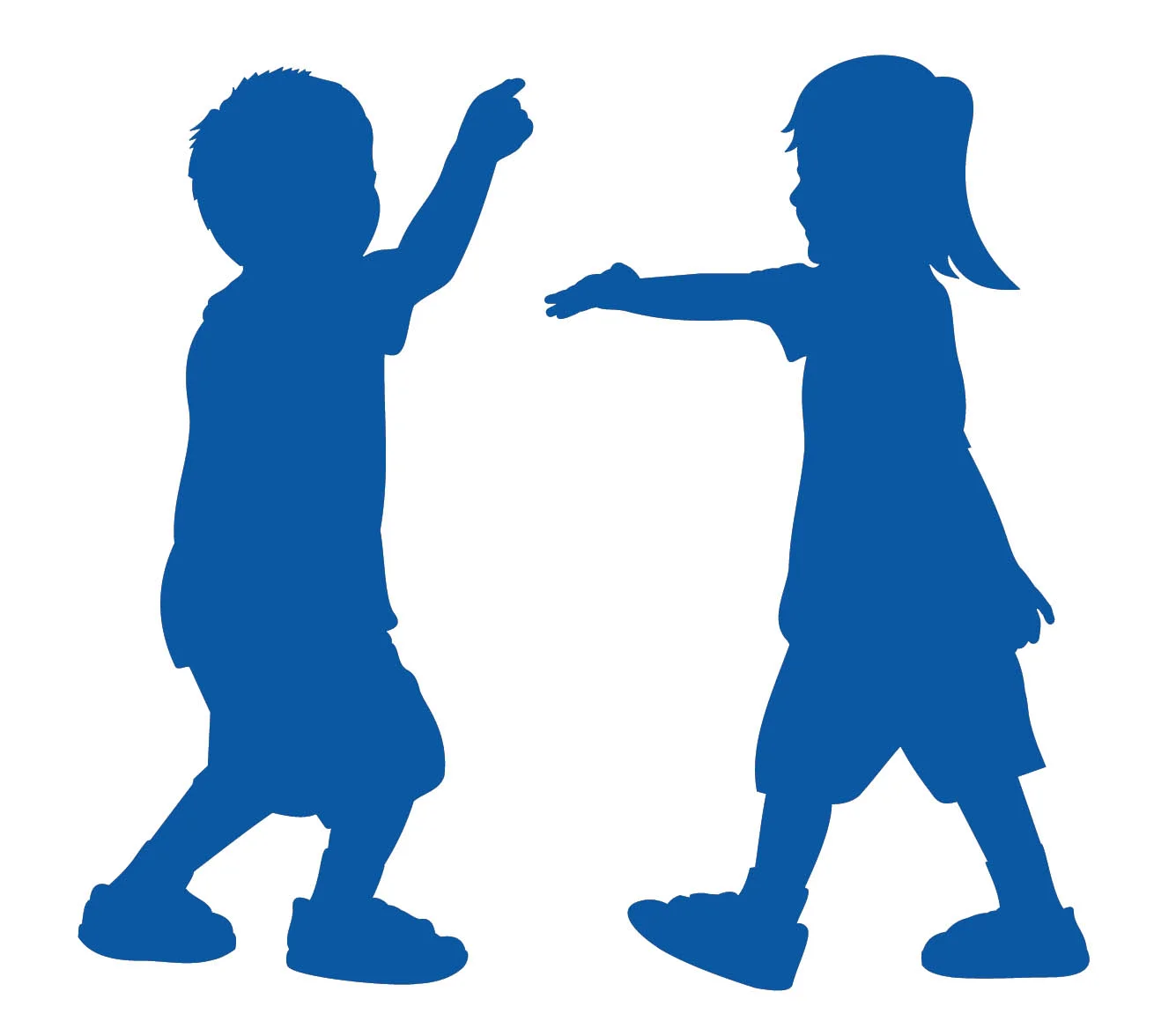How Do We Say Hello?
It would happen each morning; I would position myself near the entrance to the school to eagerly await the arrival of our nursery school students. I would greet each parent and child with a smile and call the child by name. This daily ritual is not uncommon for principals and heads of schools in most communities and parents and most children appreciate this brief connection at the start of their school day.
I specifically said, most children, because there are often young children who don’t relish what they perceive as the pressure of this particular social interaction. Like all human exchanges, these morning greetings can become a bit of a dance. It’s often easy and fun to repeat an amusing response that a parent or child has initiated. I remember a father who arrived each morning and reminded his daughter Diana and me “to not have too much fun”! it was a little joke between us that even today when our paths cross, one of us references it - and Diana is now in her third year of college.
But for every child who comfortably joins in this type of cheerful banter, there is a child who is still developing the skills needed to be put on the “spot” socially. Like all developmental milestones, those in the social and emotional realm have a normal and wide range of acquisition. Temperament also plays a role in when children are comfortable with this type of interaction. We all know the extroverted child who is a real “people person” from an early age, but not every child is and that's important to remember.
For that child who is not comfortable, the dance usually goes something like this. I greet the parent and child, and the parent greets me back, then looks to the child for their response. The child is silent and may even look away or hide behind the parent. The parent is slightly embarrassed even though my smile and facial expression tries to signal that it's really okay and not a big deal. The parent then directs the child to say hello to me or even chides them for not saying hello with words like, “c’mon, you know what to say.” This almost never elicits a greeting from the child, just more resistance. Unfortunately, this exchange is often repeated so that there becomes a bit of tension each morning as we assume our roles in this dance.
What often happens when I see the child later, and we are no longer trapped in this awkward scene, it is not unusual that the child calls hello to me or even gives me a hug. The exchange at that point is on the child’s terms and it is a relaxed and genuine connection.
How can we break this uncomfortable cycle? Before I answer that questions let me say that I completely understand why there is an expectation that our bright and articulate young children should be able to be equally poised in these social situations and pull off a simple greeting. They are capable and sophisticated in so many other ways. However, the reality is that although children under four are beginning to understand that their words and actions affect the feeling of others, this concept is still emerging. Repeatedly reminding them to be polite or even scolding them for their lack of manners in front of others, is not appropriate and unfortunately, just doesn’t work.
Here are two things that I have found to be effective in situations like the one described: one is ignoring the child’s silence and modeling a pleasant exchange for them. After I say hello to parent and child, I allow a bit of time for a response. If none is forthcoming, I encourage the parent to respond with their own greeting to me then continue with some pleasantry about the walk to school or the weather, and then move on. More often than not the child will take the opportunity to chime in at that point. And if they don’t, that’s fine; they will eventually get the hang of it on their terms, especially if they are not asked to do so on demand. And two, having a conversation about manners outside of the situation is always more productive.
Telling your child a story about the different ways that you greet someone. Explaining that when you meet someone new, you use your right hand to shake their right hand. Even very young children who don't recognize letters yet, love learning the little trick of learning left from right. Your index finger and thumb on one's left-hand form the letter "L" for left, that makes your other hand the "right" hand for shaking. Imparting information about greetings in a matter of fact way and not making it about your child goes a long way. Even doing some role-playing can be fun and effective. My 21 month old granddaughter learned to wave hello and goodbye, give high fives and even give fist bumps, quite some time ago. Recently she has had her doll "Ada", who has especially long arms, trying out these greetings to her other toys. She is acting out and practicing these social actions. Even when she becomes shy and quiet - unusual for her - with strangers, she manages a wave, a high five or a bump, because she has rehearsed it many times.
One of my favorite songs that we frequently sang at circle time goes something like this, “I have a friend whose name is Annie, I have a friend whose name is Annie, I have a friend whose name is Annie, now I’ll shake her hand.” After shaking Annie's hand, Annie then gets to name the child next to her and shake his or her hand, and so on. Before we sang the song, I would explain to the group that it is important to look at the person’s eyes when they were shaking hands with them because it makes them feel good when we do. Did some children choose not to participate, yes, but I would say, "that's ok" and quickly move on. Once that song became a part of the children’s repertoire, morning greetings at the front door became a little easier. Hello, and have a nice day!






